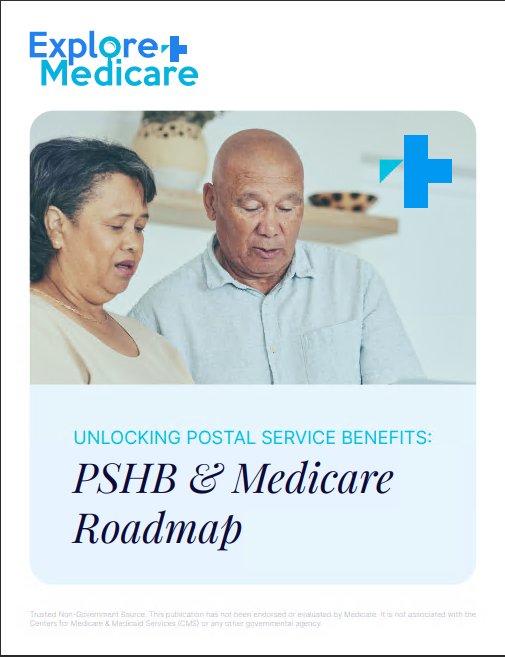Key Takeaways:
-
Understand the key components of Medicare costs and what drives your expenses.
-
Learn practical strategies to reduce your out-of-pocket spending while getting the care you need.
Breaking Down Your Medicare Costs
Medicare offers essential health coverage, but understanding what you’re really paying for can be a challenge. The program is divided into parts—each with distinct costs that can add up if you’re not careful. Let’s start by understanding the basics of what you’re responsible for under Medicare.
Part A: Hospital Insurance
Part A generally covers hospital stays, skilled nursing facility care, hospice care, and some home health services. If you worked for at least 10 years and paid Medicare taxes, you likely don’t pay a premium for Part A. However, it’s not entirely free. You’ll face costs such as:
-
A deductible for each benefit period—this resets every time you’re admitted after a 60-day break.
-
Daily coinsurance for longer hospital stays.
Part B: Medical Insurance
Part B covers outpatient services like doctor visits, preventive care, and diagnostic tests. You’re responsible for:
-
A monthly premium that depends on your income.
-
An annual deductible before coverage kicks in.
-
Coinsurance, typically 20% of approved costs for most services.
Part D: Prescription Drug Coverage
Part D helps cover prescription drugs but comes with its own set of costs:
-
A monthly premium set by your chosen plan.
-
An annual deductible capped at $590 in 2025.
-
Copayments or coinsurance for medications, depending on their tier.
Additional Costs
If you opt for supplemental coverage or Medicare Advantage plans, these may come with additional premiums, deductibles, and out-of-pocket costs. It’s essential to weigh the benefits against the costs carefully.
The True Drivers of Medicare Costs
While the advertised premiums might seem manageable, hidden costs can quickly escalate. Let’s explore what contributes to the total price tag.
Frequent Health Needs
Chronic conditions or frequent medical visits increase your spending on copayments, coinsurance, and deductibles. Planning for these recurring costs is essential.
Higher-Income Brackets
If your income exceeds $106,000 (individuals) or $212,000 (couples), you’ll pay an Income-Related Monthly Adjustment Amount (IRMAA) on Parts B and D premiums.
Prescription Drug Prices
Even with Part D, out-of-pocket drug costs can be significant, especially for specialty medications. Thankfully, the new $2,000 out-of-pocket cap for 2025 provides some relief.
Unforeseen Medical Events
Emergencies or sudden health issues often lead to unexpected costs. Hospital stays, surgeries, and specialist visits can strain your budget if you’re unprepared.
How to Control Your Medicare Expenses
Now that you know where your money goes, let’s dive into practical strategies to keep your costs under control without compromising on care.
1. Review Your Plan Annually
Medicare plans, including Part D and Medicare Advantage, change every year. Take advantage of the annual Open Enrollment Period (October 15 to December 7) to compare your options. Ensure your current plan still meets your needs and offers competitive rates.
2. Optimize Preventive Care
Medicare covers many preventive services, such as screenings and vaccines, at no cost to you. Staying on top of these services can help you catch issues early and avoid costly treatments later.
3. Stay In-Network
For those with Medicare Advantage or supplemental plans, using in-network providers typically costs less. Out-of-network services often come with higher coinsurance or may not be covered at all.
4. Enroll in Medicare on Time
Missing your Initial Enrollment Period (a seven-month window around your 65th birthday) can lead to late enrollment penalties. These penalties increase your premiums for Parts B and D and are often lifelong.
5. Explore Assistance Programs
If your income and resources are limited, you may qualify for programs like Medicaid, Extra Help, or a Medicare Savings Program. These can significantly reduce premiums, deductibles, and other costs.
6. Plan for Prescription Costs
Use tools like formularies to choose plans that cover your specific medications. Consider generic alternatives or mail-order pharmacies to save on prescription costs.
7. Monitor Your Healthcare Usage
Track your medical expenses to spot patterns. For example, you might find that switching to telehealth for certain appointments reduces your spending on transportation and co-pays.
Anticipating Future Changes
Medicare is not static. Policies, costs, and benefits evolve every year. For 2025, here are some updates you should keep in mind:
-
The introduction of the $2,000 cap on Part D out-of-pocket drug costs provides much-needed relief.
-
The Part B premium has risen to $185, and the deductible is $257. Planning for these increases is essential.
-
Adjustments in IRMAA brackets mean some beneficiaries will see changes in their premium amounts.
Stay informed about these updates to budget effectively and avoid surprises.
A Smarter Approach to Medicare Spending
Managing your Medicare costs isn’t just about cutting corners—it’s about being proactive and informed. Small changes, like reviewing your plan annually or optimizing your healthcare usage, can add up to significant savings over time.
Remember, Medicare is designed to support your health, but navigating its costs takes a bit of strategy. Take control of your expenses today to enjoy peace of mind tomorrow.









